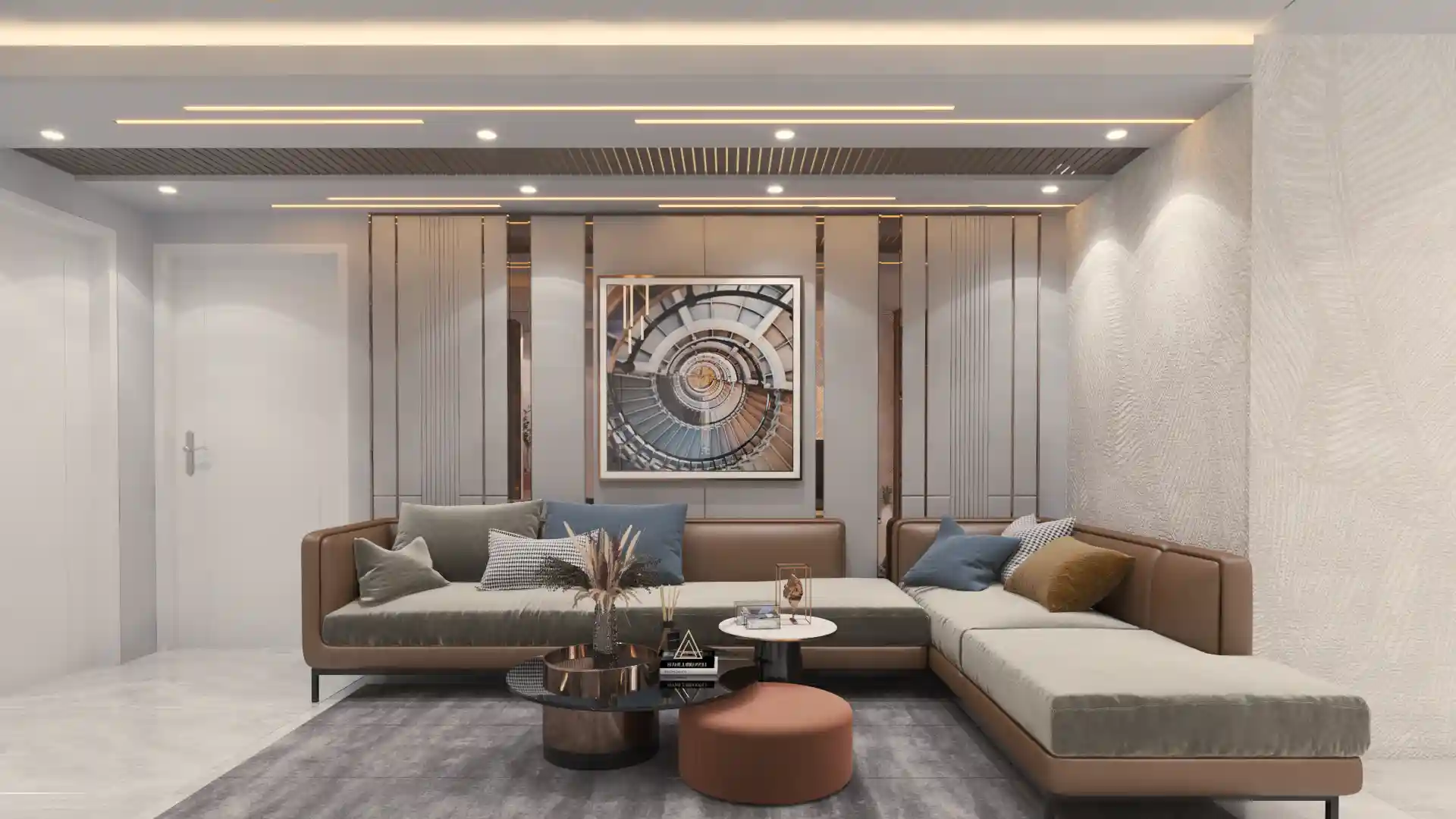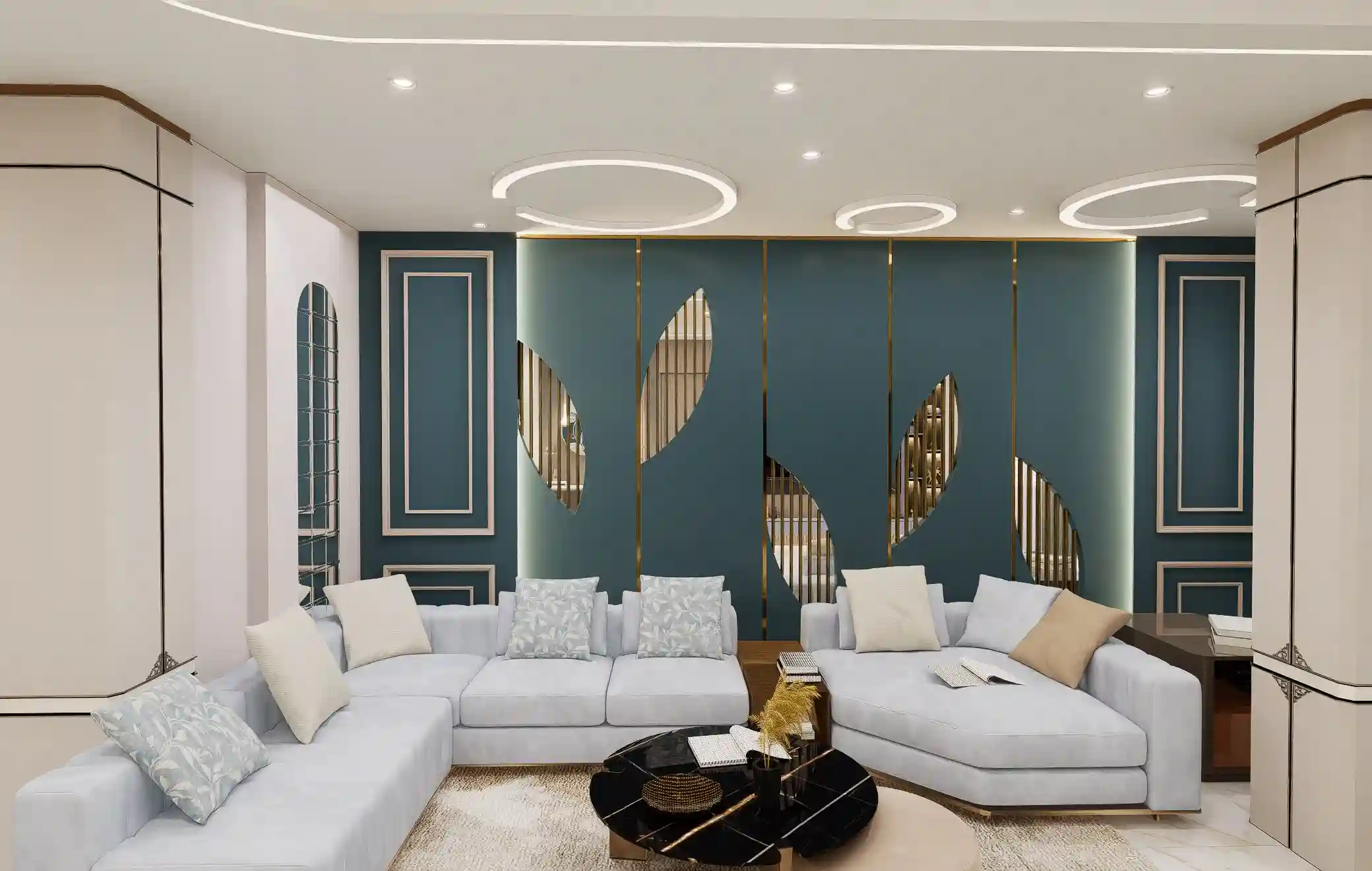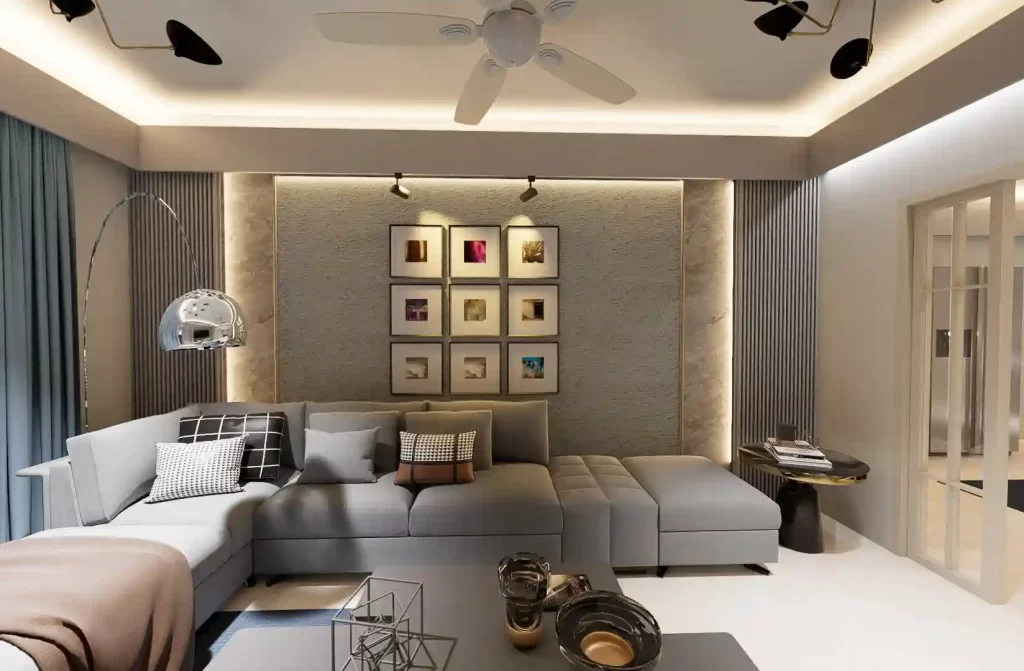Arranging furniture in the living room can be both exciting and challenging. The goal is to create a space that is functional, stylish, and comfortable. In this guide, we’ll explore various living room furniture arrangement ideas .
1. Understanding Your Space
Before moving any furniture, it’s crucial to understand the dimensions and shape of your living room. Measure the length and width, and take note of windows, doors, and any architectural features like fireplaces or built-in shelving.
Key Points to Consider:
- Living Room Layout: Knowing the layout helps in planning the placement of your furniture.
- Natural Light: Identify where the natural light enters the room and arrange furniture to take advantage of it.
- Traffic Flow: Ensure there is a clear path for walking without obstacles.

2. Defining the Focal Point
Every living room needs a focal point. This could be a fireplace, a large window with a view, or an entertainment center.
Creating a Focal Point:
- TV Placement: If the TV is your focal point, arrange seating to face it.
- Fireplace Arrangement: For a fireplace, place seating around it in a conversational manner.
- Feature Wall: Highlight a wall with artwork or an accent color to draw attention.
3. Choosing the Right Furniture
Selecting the right furniture is essential for a balanced and harmonious living room.
Essential Furniture Pieces:
- Sofa: The largest piece, often placed against the longest wall.
- Chairs: Add chairs for additional seating, placed opposite or adjacent to the sofa.
- Coffee Table: Positioned in the center, ensuring it’s within easy reach of the seating.
- Side Tables: Useful for placing lamps and drinks, positioned next to chairs and sofas.
- Storage Solutions: Consider bookshelves or cabinets to keep the room tidy.

4. Arranging the Furniture
The arrangement of furniture depends on the size and shape of your living room.
Popular Furniture Arrangements:
- Symmetrical Arrangement: Creates a balanced and formal look. Place matching sofas or chairs opposite each other.
- Asymmetrical Arrangement: More casual and relaxed. Mix different styles and sizes of furniture.
- Circular Arrangement: Ideal for conversations, with seating arranged in a circle around a central table or rug.
5. Creating Conversation Areas
To make your living room more inviting, create areas that encourage conversation.
Tips for Conversation Areas:
- Intimate Seating: Place chairs close together to facilitate conversation.
- Multiple Areas: In larger rooms, create several small conversation spots.
- Ottomans and Poufs: These versatile pieces can serve as extra seating or footrests.
6. Balancing the Room
Balance is key to a well-arranged living room. Distribute furniture and decor evenly to avoid a lopsided look.
Achieving Balance:
- Visual Weight: Balance heavy pieces with lighter ones. For example, a large sofa with a delicate coffee table.
- Color and Texture: Use a consistent color palette and mix textures to add interest without overwhelming the space.
7. Enhancing with Accessories
Accessories add personality and style to your living room.
Key Accessories:
- Rugs: Define spaces and add warmth. Ensure the rug is large enough to anchor the furniture.
- Throw Pillows: Add color and comfort to sofas and chairs.
- Lighting: Mix ambient, task, and accent lighting for a well-lit space.
- Artwork: Hang artwork at eye level to create a focal point.
8. Maximizing Small Spaces
If you have a small living room, there are strategies to make it feel larger.
Small Space Tips:
- Multi-Functional Furniture: Use pieces that serve multiple purposes, like a sofa bed or storage ottoman.
- Mirrors: Reflect light and create the illusion of more space.
- Vertical Space: Utilize wall-mounted shelves and tall bookcases to draw the eye upward.
9. Adapting to Open Floor Plans
Open floor plans are popular in modern homes. Arranging furniture in these spaces requires a different approach.
Open Floor Plan Strategies:
- Area Rugs: Define different zones within the open space.
- Furniture Placement: Arrange furniture to create distinct areas for living, dining, and entertaining.
- Consistency: Use a consistent color palette and style to unify the space.
10. Seasonal Changes
Changing your furniture arrangement with the seasons can keep your living room feeling fresh and new.
Seasonal Tips:
- Summer: Opt for lighter fabrics and colors. Arrange furniture to take advantage of natural light.
- Winter: Add cozy textures like wool and faux fur. Arrange seating around the fireplace for warmth.
Conclusion
Arranging your living room furniture is an opportunity to express your style and create a space that meets your needs. By considering the layout, focal point, furniture selection, and balance, you can transform your living room into a functional and inviting space.

